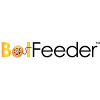Results 1 to 5 of 5
-
10-29-2014, 06:45 PM #1
Calibration Help - Main Reason for Parts Not Fitting Together ?
I need alittle help getting my parts to print to an accurate size so that they fit together properly.
For the most part, my prints come out looking good, small issues here and there, but visually, they are not that bad.
Its when I goto assemble parts that I run into an issue. Things are too large. If I print something from Thingiverse that has several parts, odds are they will not fit together.
I either have to shave/sand them down, or print the inner parts again slightly scaled down.
I saw this calibration post on Thingiverse, but I dont know how to make the proper adjustments to correct the issues.
http://www.thingiverse.com/thing:52946
I use CURA software for my prints, and really would like to stick with it.
Do I make these changes somehow in CURA? Or are these settings that are located in the firmware, similar to ESteps?
So far I have calibrated my ESteps, and made sure all bolts and belts are tight on the printer.
I also have Auto Bed Leveling setup and working well.
One thing I plan to try is to move the axises a set amount and try to measure how far they move, just like calibrating the ESteps
Printer is a Prusa i3v 10"
I generally print with PLA @ 190 and Bed @ 75 with a fan. Print speed of 75.
Here are some prints I have made so far, oldest at the beginning of the gallery, most resent ones are at the end of the gallery.
http://jtice.smugmug.com/3D-Printing/Misc-3D-Prints
-
10-29-2014, 11:49 PM #2Technician

- Join Date
- Jun 2014
- Posts
- 74
Is that a Hexagon hotend? What nozzle size? And what layer height are you printing from Cura. The reason I ask is I have the same printer, Hexagon HE, .40 nozzle and I have never had acceptable results at a .4 layer height, but .2 is very good (generally .3 first layer). It looks like none of your prints are printing that well and have lots of artifacting and small areas that are not printing well throughout the print and the layer overhang I see on the side looks like when I print at .4. That printer is capable of a lot better than that. I am relative newbie to this, so it's not like I have tons of experience printing. I would be happy to post a pic of a recent print of mine so you know the printer can do (in the hands of a novice) if you like. Also, I have found for me, Slic3r is giving me overall better print quality. Especially the first layer. I prefer the UI of Cura, but Slic3r just gives me better prints. I'm using the 1.20 experimental version of Slic3r. But that just might be my inexperience.
-
10-30-2014, 07:15 AM #3
I have a Hexagon 0.4mm head, and most my prints have been around 0.2mm layer height, first layer typically 0.3mm
The thickest I have tried is 0.3mm Most the photos are prints using 0.2 or 0.24mm
Far as I know, you should never use a layer height more than 80% of your nozzle width, so that would explain why your 0.4mm layer prints wont look good.
Yes, the artifacts are something else I am trying to troubleshoot.
It seems anywhere the head has to pause or come almost to a stop, it will leave a mark, or a very tiny blob.
-
10-31-2014, 07:03 AM #4
-
11-07-2014, 10:03 AM #5
Did you try to measure the printed model to see if the dimension matched the STL model?
Assuming that is no problem with the printer itself (extrusion speed setting = actual extrusion speed).
It is highly likely you have an overflow filament issue.
Printer Setting: 1.75mm
The actual filament diameter will fluctuate depending on supplier. It seems your filament is measured at above 1.75mm.
So when you are extruding, the printer is telling to extrude 1.75 cm cube. But in fact there is more filament than it actually needs, so the extra filament got pushed to the side of your model. Result: your model is slightly larger than you expected.
You can try to fix it by measuring your filament size at many points. So you take the average diameter & plug it into your printer setting.
Please keep in mind you will still encounter holes & blobs in between due to inconsistency of the filament. Worse case, you might need to re-calibrate for every new spool.
Give it a try, better than throw those filament away. Enjoy




 Reply With Quote
Reply With Quote






Extruder not feeding during print,...
Yesterday, 01:59 AM in Tips, Tricks and Tech Help